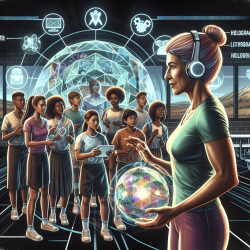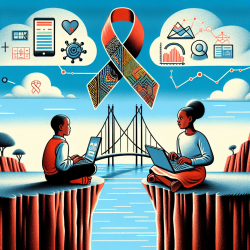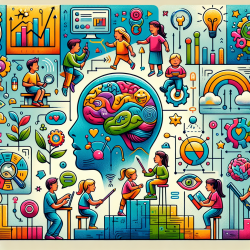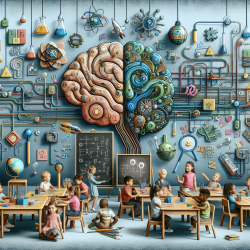Introduction
As a Special Education Director, staying ahead of the curve in educational technology is crucial. The recent advances in augmented reality (AR) and virtual reality (VR) offer incredible opportunities to enhance therapy services for students. A groundbreaking research article titled Augmented reality and virtual reality displays: emerging technologies and future perspectives provides insights into how these technologies can be leveraged in educational settings.
Understanding the Research
The research highlights the challenges and solutions in creating high-performance AR and VR displays. It focuses on innovations like holographic optical elements (HOEs) and lithography-enabled devices, which are transforming the capabilities of AR and VR headsets. These advancements are crucial for creating immersive and interactive experiences that can meet the demanding requirements of human vision.
Practical Applications in Therapy
Implementing AR and VR in therapy sessions can offer numerous benefits:
- Enhanced Engagement: AR and VR can create engaging and interactive environments that capture students' attention and make therapy sessions more enjoyable.
- Personalized Learning: These technologies allow for the customization of therapy sessions to meet individual student needs, providing tailored support and interventions.
- Real-World Simulations: VR can simulate real-world scenarios, helping students practice skills in a safe and controlled environment.
- Data Collection and Analysis: AR and VR can facilitate the collection of data on student performance, allowing for more informed decision-making and progress tracking.
Overcoming Challenges
While the potential of AR and VR is immense, there are challenges to consider, such as:
- Cost: Implementing these technologies can be expensive, but the long-term benefits often justify the investment.
- Training: Staff may require training to effectively use AR and VR tools, ensuring they can integrate them seamlessly into therapy sessions.
- Technical Issues: Ensuring reliable technology and addressing any technical issues promptly is crucial for maintaining smooth therapy sessions.
Encouraging Further Research
To fully harness the potential of AR and VR in special education, further research and development are essential. Practitioners are encouraged to explore the latest advancements and consider how they can be applied in their settings. Networking with other professionals and attending conferences or webinars can provide valuable insights and foster collaboration.
Conclusion
AR and VR technologies are revolutionizing the field of special education therapy. By staying informed and embracing these innovations, practitioners can significantly enhance their services and improve student outcomes. For those interested in diving deeper into the research, the original paper offers a comprehensive overview of the current state and future directions of AR and VR technologies.
To read the original research paper, please follow this link: Augmented reality and virtual reality displays: emerging technologies and future perspectives.










